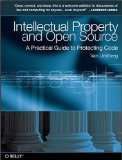|
Almost my first thought on seeing this book was that out of the five words in
the title, Richard Stallman would approve only the third and shortest one: the
word ``and''. It is quite clear from the preface, however, that the author is
fully aware of the awkward issues that surround terminology in this area: his
``note about terminology'' refers to the FSF's ``phrases that are worth avoiding''
and also addresses directly the question of ``free software'' versus ``open
source''. He explains that part of his choice of wording by saying
Where applicable, I will use the correct term to describe how they are both
socially and legally different. Nevertheless, because open source software
is a strict superset of free software, I will generally use the more
inclusive term when discussing legal elements common to both.
Stallman's primary objection to the use of the term ``Intellectual Property'' is
that it is often used in such a way as to blur and confuse the differences
between the very different concepts of copyright, trademarks, patents and
trade secrets. Van Lindberg can certainly plead not guilty to that one: the
book defines its terms extremely clearly, and discusses the various concepts
separately and in depth, while also describing the way they interact.
In the first chapter he defines different types of good: rivalrous and
non-rivalrous goods, excludable and no-excludable goods, private goods, public
goods, common-pool goods and club goods, and goes on to examine the legal
concept of property. I found these short sections very interesting and
enlightening, because they made me realise that I had never really analysed
the underlying concepts in any depth.
The same kind of clarity is applied to all the concepts described in the book.
The author is clearly a person with a close knowledge both of the law and of
the world of software. He uses interesting and sometimes surprising analogies
to illustrate legal concepts and practices. For example, he observes that
patent applications use indentation to clarify structure in a manner similar
to coding conventions. Elsewhere he uses a Simpsons story line to help
explain the concept of trade secrets, draws a parallel between credit unions
and open source, compares Red Hat's patent policy and India's nuclear
strategy, and sees a parallel between contract law and a distributed source
code management system.
Many of the most controversial and notorious cases of recent years appear as
examples: for instance a discussion of the ``GIF patent''. In the section on
trademarks, there is a clear description of why AOL really had no choice but
to pursue what was then called GAIM over infringement of the trademark it held
on the name ``AIM''.
The book does not attempt to cover the legal issues internationally: the
descriptions of the legal situation are all concerned with US law. This means
that the sections on patents and copyright both describe different laws from
those which apply in the UK and Europe. However, the world of software is an
international one, and the one jurisdiction that matters in that world is that
of the United States (which has been assiduously attempting to force its
intellectual property laws on the rest of the world for some time now). As it
is in the US that many of the most important and significant battles for free
and open source software are being played out, understanding those battles is
largely a matter of understanding the American legal position. So this book
is useful and appropriate outside the US, but readers in this country will
want to compare with some other source of information about the situation
here. The copyright sections were the area where I felt the need for a
British parallel text most strongly.
As would be expected there is considerable discussion of the various free and
open source licences, and in particular the current state of the law as it
applies to the GPL. Appendices include the text of the more important
licences, and there are tables showing the interactions and compatibility
between them.
Despite my slight reservation about the ``US-only'' descriptions of the relevant
laws, this is a valuable book which should be on the shelf of anyone who is
interested in the issues it covers.
Buy it from Amazon (UK)
|

